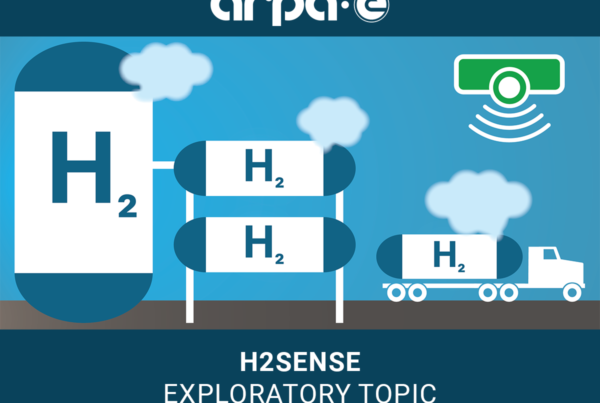
- EWE tests underground hydrogen storage in Rüdersdorf as part of the research project HyCAVmobil
- Hydrogen deposit until end of October
- Start of trial operation and research tests on site and in the laboratory
- One year of research work for transferability to large cavern storage
Strausberg– The energy service provider EWE begins on Monday with the storage of hydrogen in its house-sized test cavern in an underground salt dome in Rüdersdorf, Brandenburg. The filling of the caverns takes eight days. EWE uses six tons of hydrogen, provided by popular industrial gas suppliers. By way of comparison, these six tons can be used to fully fuel 1,000 hydrogen cars.
On these eight days, hydrogen filling takes place around the clock with the help of a rolling delivery process with a total of six tankers. Through continuous filling, the brine, which is still in the cavity from the construction of the cavity, is evenly displaced and brought to the earth’s surface. EWE transports this 500 cubic metre aqueous solution via an existing brine transport pipeline to the Soleversen counter station to Heckelberg. There, the rock layers are suitable for the sinking of brine, a mixture of salt and water.
 Starting hydrogen storage tests
Starting hydrogen storage tests
After hydrogen filling, the extensive test operation and research begins within the framework of the project called “HyCAVmobil”. The interplay between the storage and storage of hydrogen is primarily tested.
In addition to operating the plant, the aim is to test the quality of the hydrogen after storage and to prepare it accordingly for use. “This also includes proof of how much moisture the hydrogen takes up underground and how the drying system must be stopped. After all, a purity of almost 100 percent is important for future applications, especially in the mobility sector,” explains Hayo Seeba. In addition, EWE wants to optimise the technical processes with which the integration of hydrogen into the German energy system can be achieved.
Live data measurement in Rüdersdorf
As part of the tests, EWE also receives underground live data from temperatures and pressures for the evaluation of the storage and storage procedure for the first time. This is made possible by a fiber optic cable and pressure sensors that EWE has installed during the cavern direction. According to this digital connection, continuous measurements in the cavern are possible thanks to this digital connection.
Laboratory tests by DLR in Oldenburg
In parallel to the on-site tests in Rüdersdorf, the Institute for Networked Energy Systems of the German Aerospace Center (Deutsches Zentrum für Luft und Raumfahrt; DLR) is starting to investigate the quality of hydrogen in the laboratory. The gas samples are collected both before the cavern and during operation and analysed with regard to gas purity. An investigation of brine is intended to provide conclusions about the possible microbial influence on hydrogen quality. The results are incorporated into the assessment of whether the stored hydrogen is directly suitable for use in fuel cell vehicles or whether cleaning after storage is required for these or other applications.
One year of research work for transferability to large cavern storage
The tests last about a year. During this time, three different storage and storage scenarios with different pressure changes will be tested. “In our tests, we want to recreate scenarios that will be possible in the future. Sometimes a memory science stores little and sometimes more hydrogen, sometimes less and sometimes more hydrogen is needed for applications. We play through all the operating opportunities that could later occur by a storage customer,” says Hayo Seeba.
In a next step, EWE wants to contribute the findings from Rüdersdorf to a large-scale storage project in Huntorf in Lower Saxony. It is part of the large-scale project “Clean Hydrogen Coastline”. This brings together the production, storage, transport and use of green hydrogen in industry and in heavy goods transport, thus implementing the political demands. With the major project, EWE applied for funding in February 2021 as part of the European IPCEI programme (Important Project of Common European Interest) and reached the second stage of the procedure in May 2021. The realisation of the project is dependent on the funding permit by the European Commission, which is currently being examined at European level.
Basically, EWE’s goal is to establish the storage of hydrogen. With 37 salt caverns in Huntorf, Nüttermoor, Jemgum and Rüdersdorf, EWE alone has 15 percent of all German cavern stores, which would be suitable for the storage of hydrogen in the future. This would enable green hydrogen produced from renewable energies to be storable in large quantities and used as needs-based, and would become an indispensable component to achieve set climate targets and diversify and secure the future energy supply.
10 million investment in the climate-friendly energy future
The investment volume for the HyCAVmobil project amounts to around ten million euros – four million of which are EWE’s own funds. EWE and DLR will receive the remaining amount as part of the National Innovation Programme for Hydrogen and Fuel Cell Technology as a funding from the Federal Ministry of Transport and Digital Infrastructure
Read the most up to date Fuel Cell and Hydrogen Industry news at FuelCellsWorks




